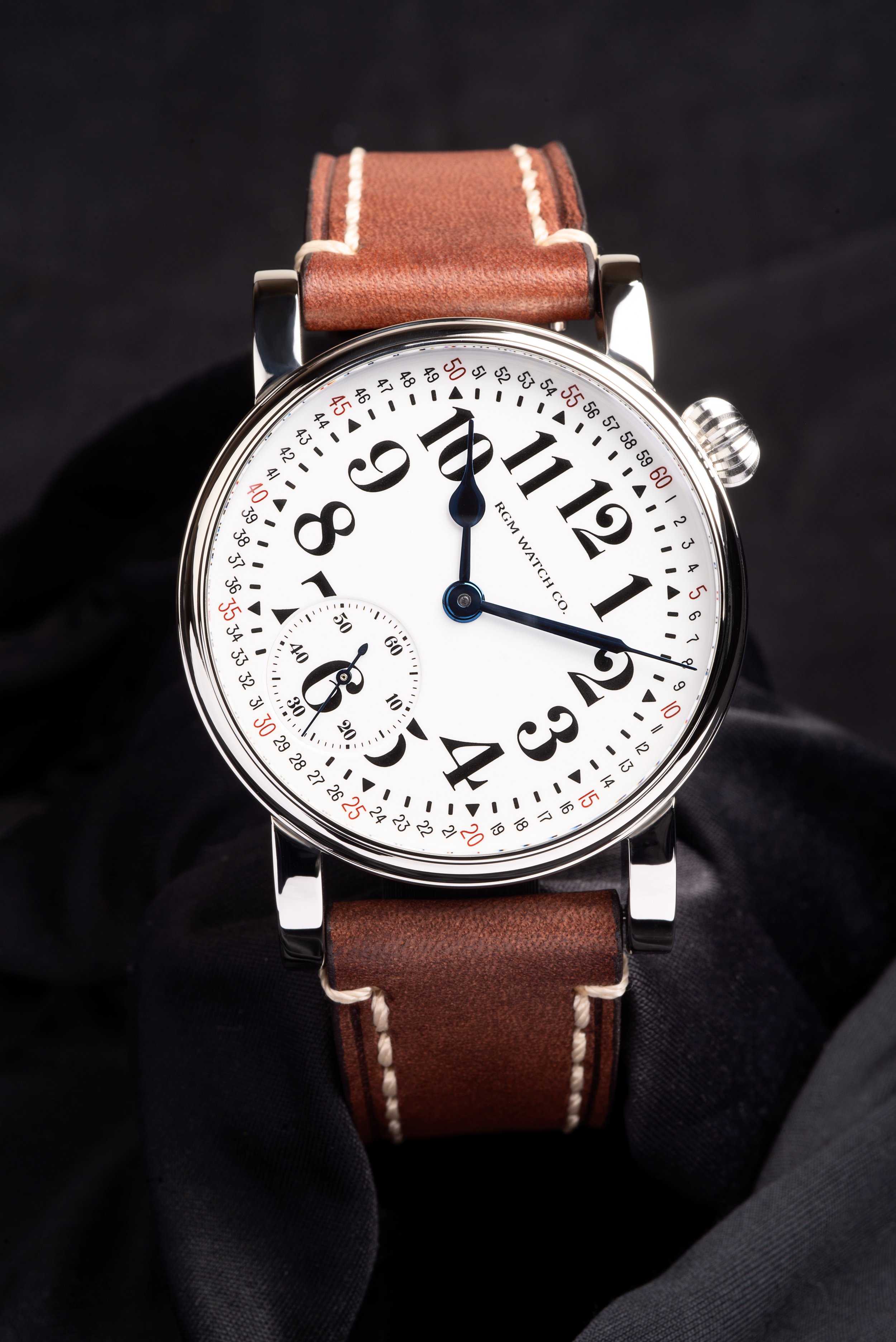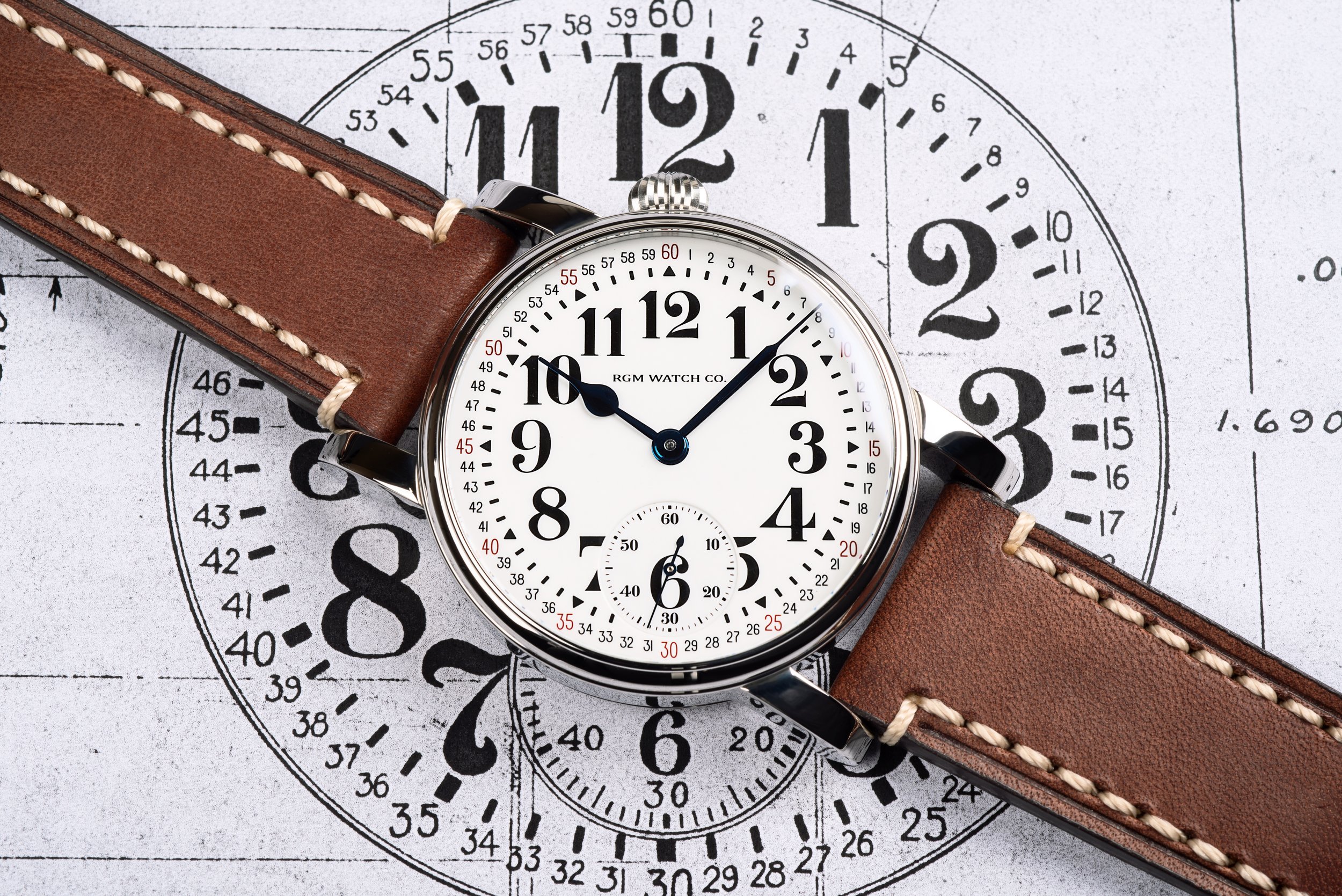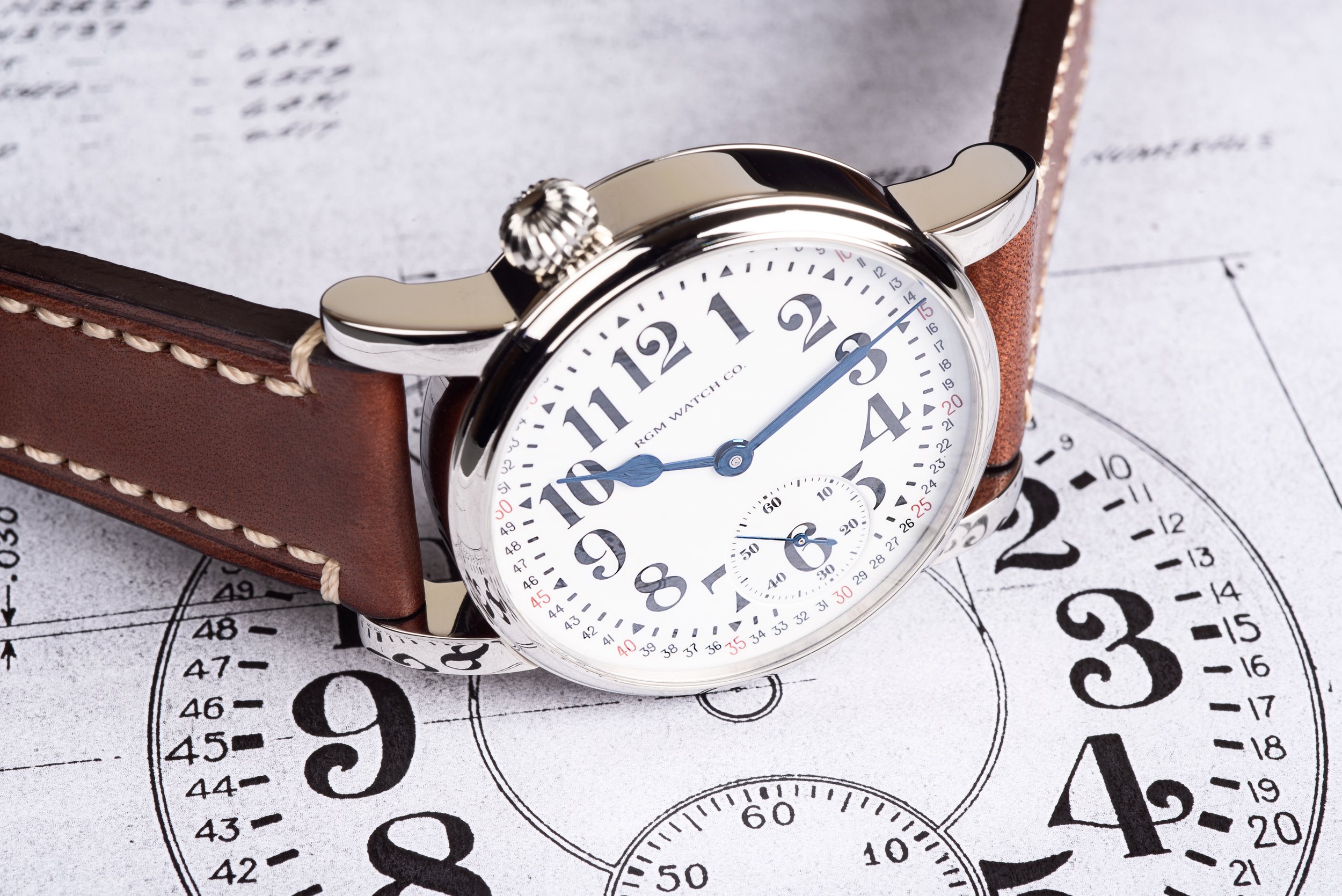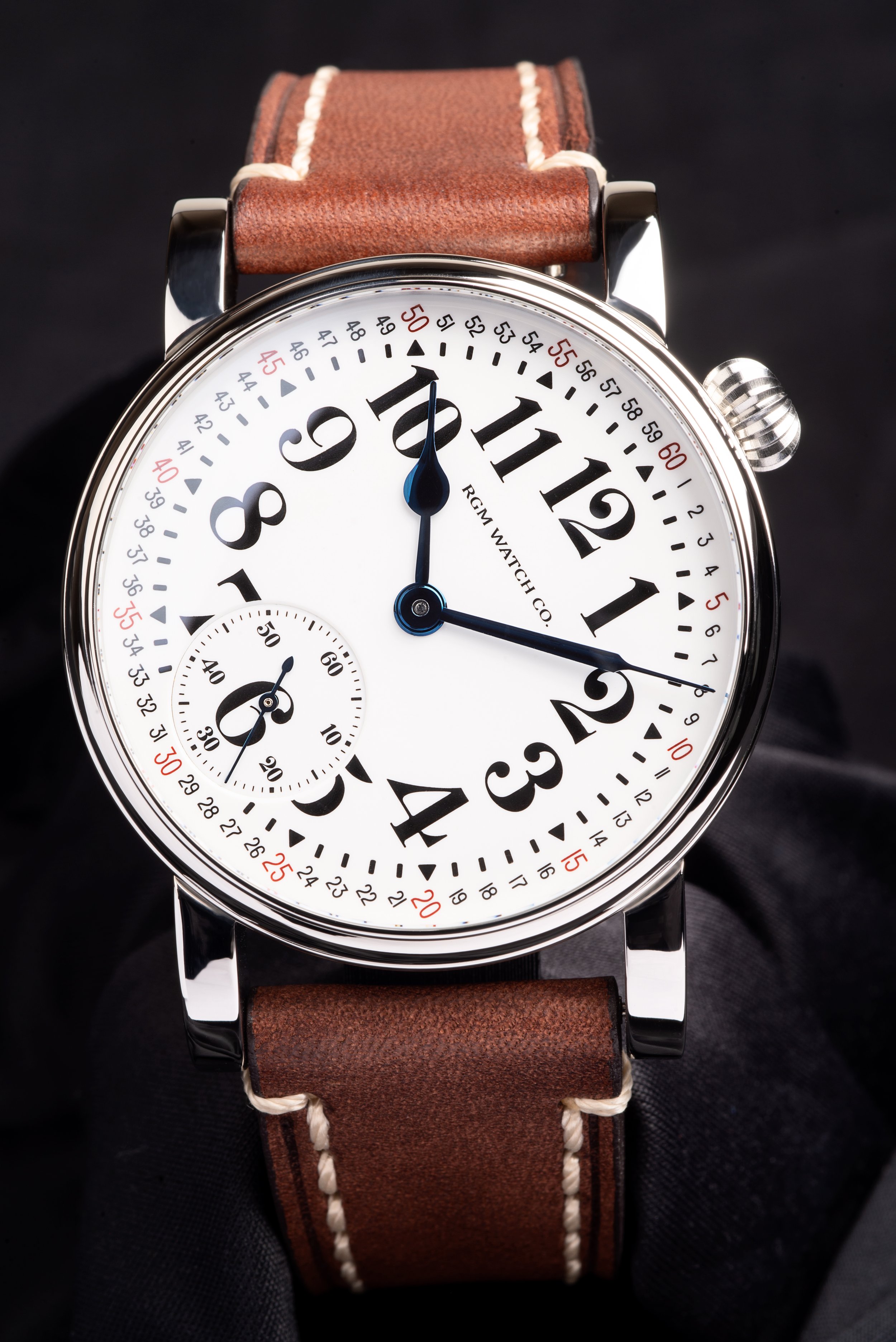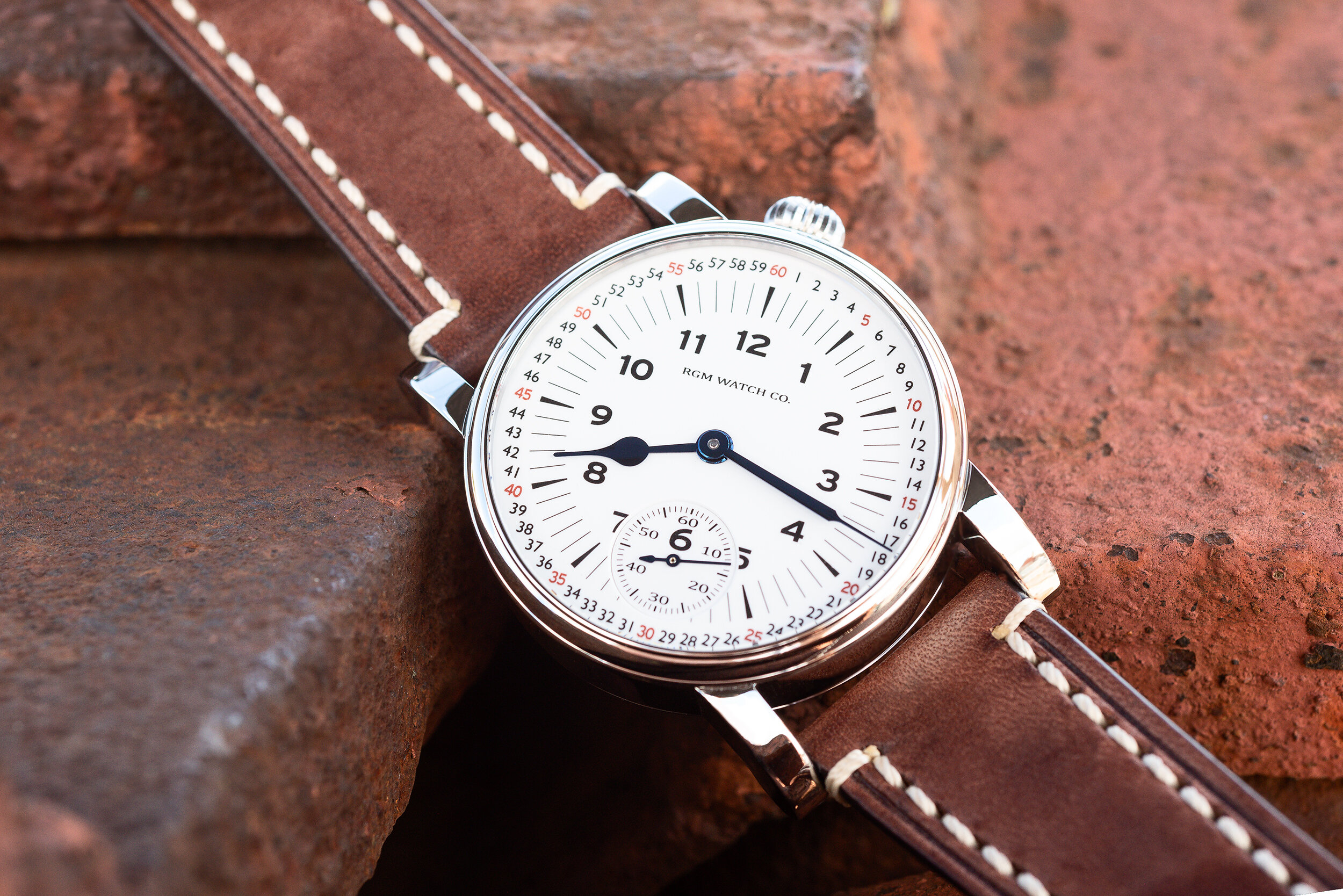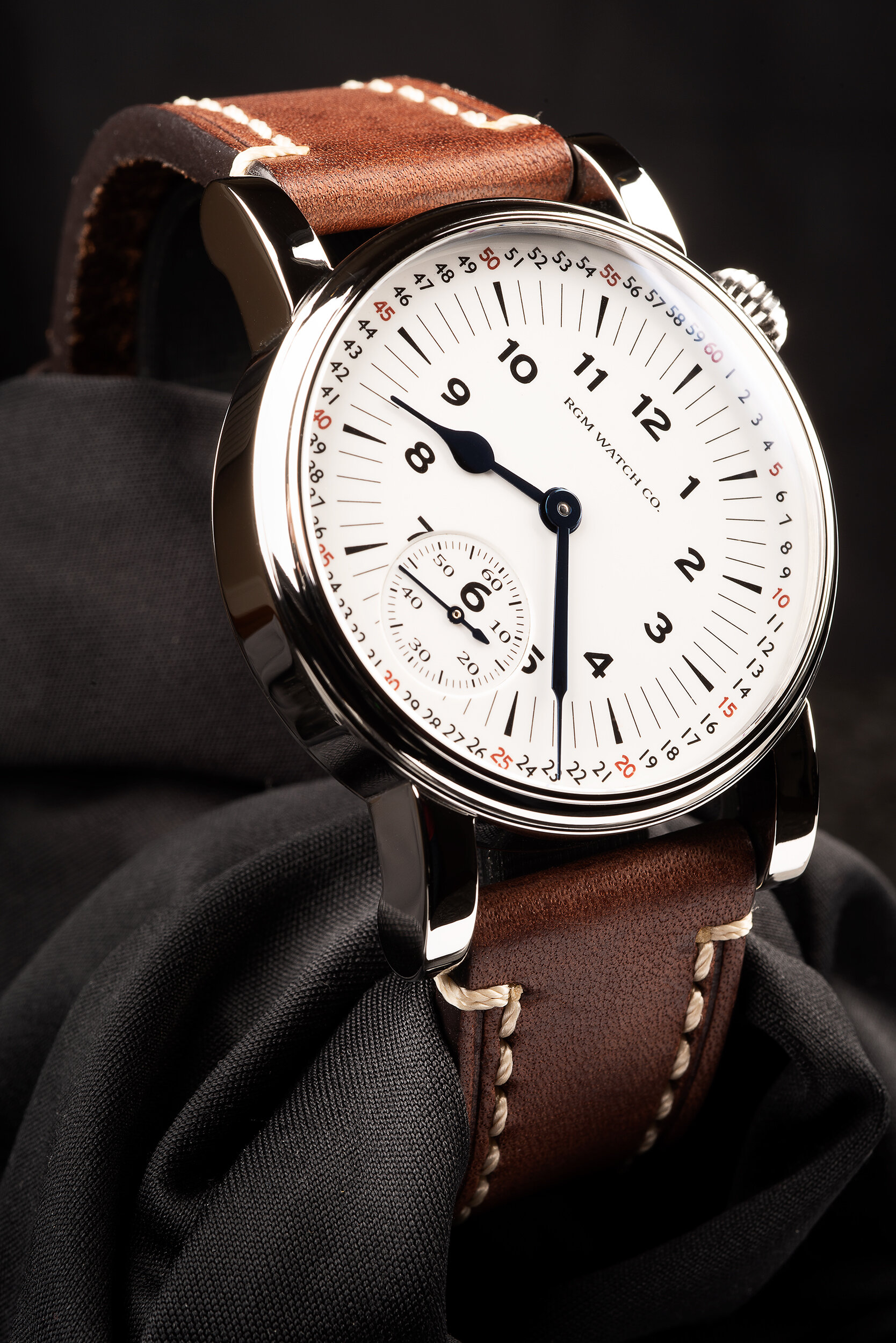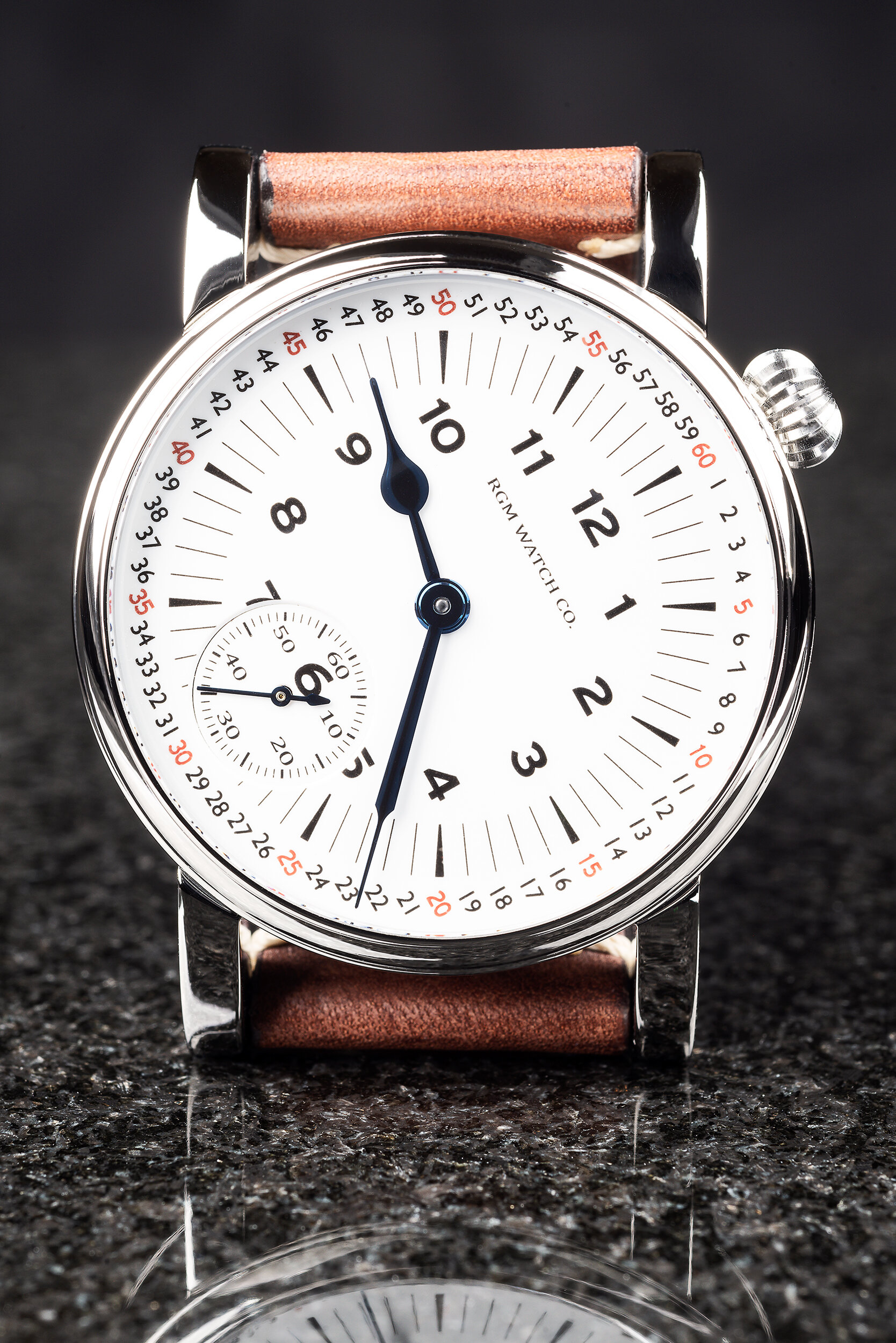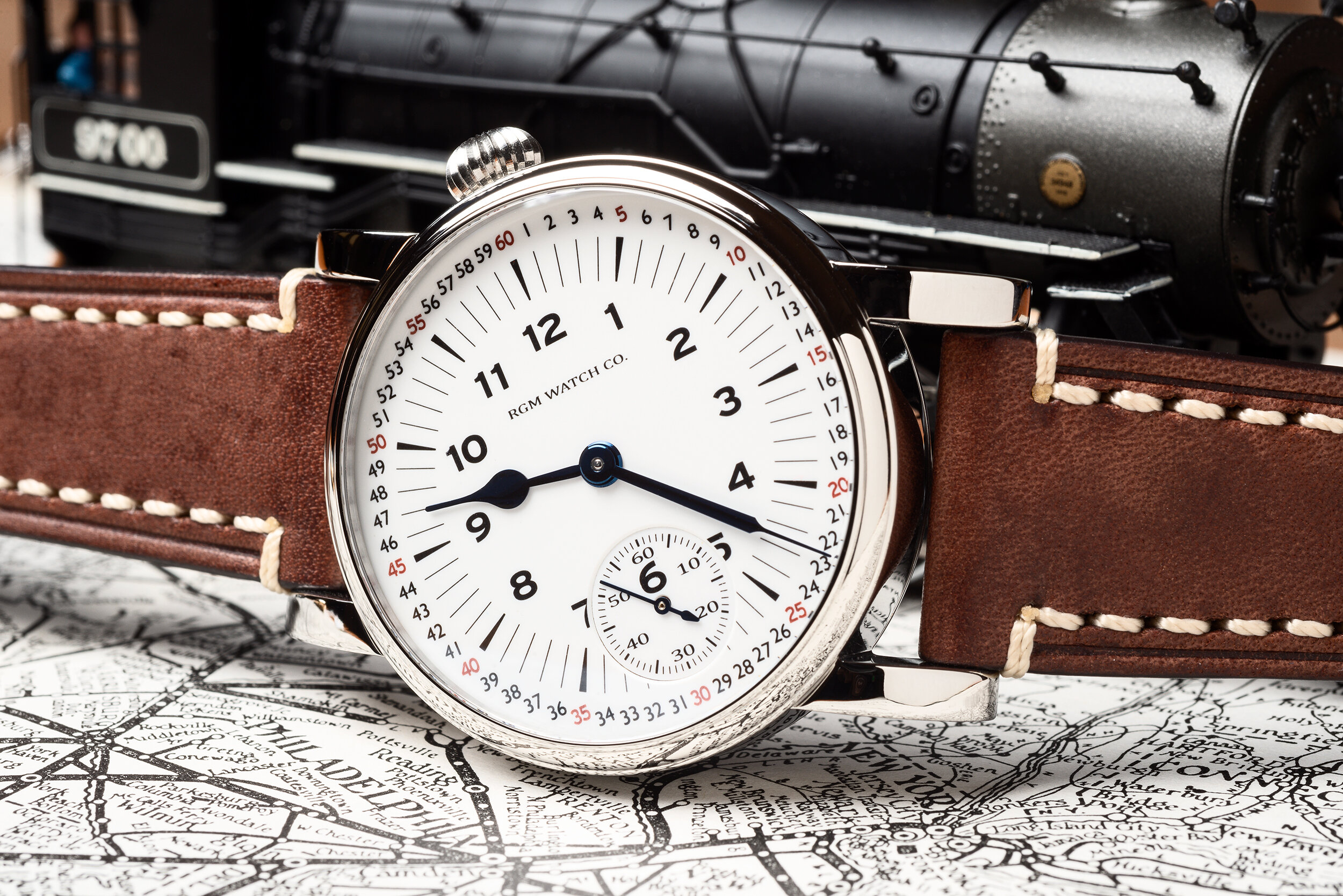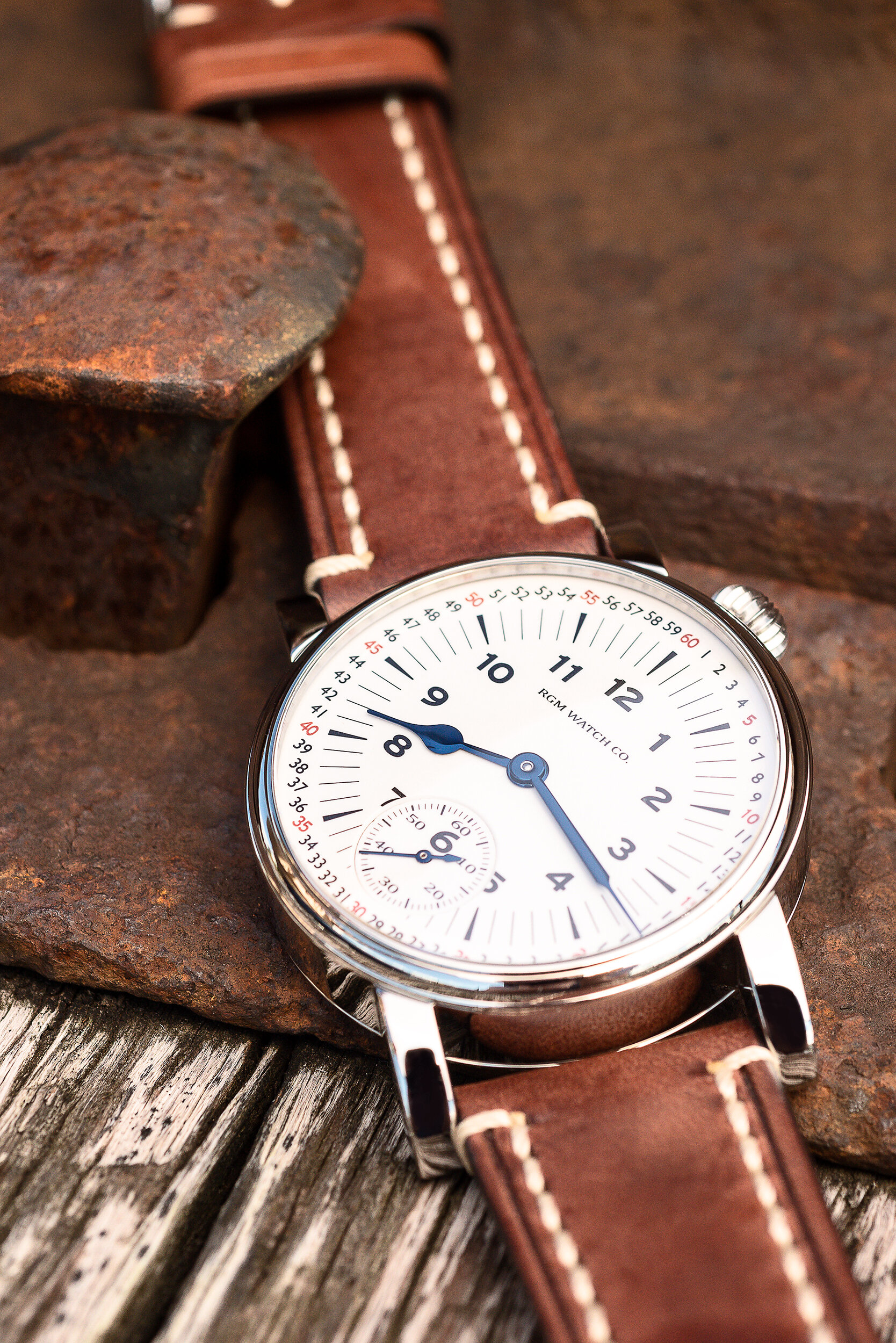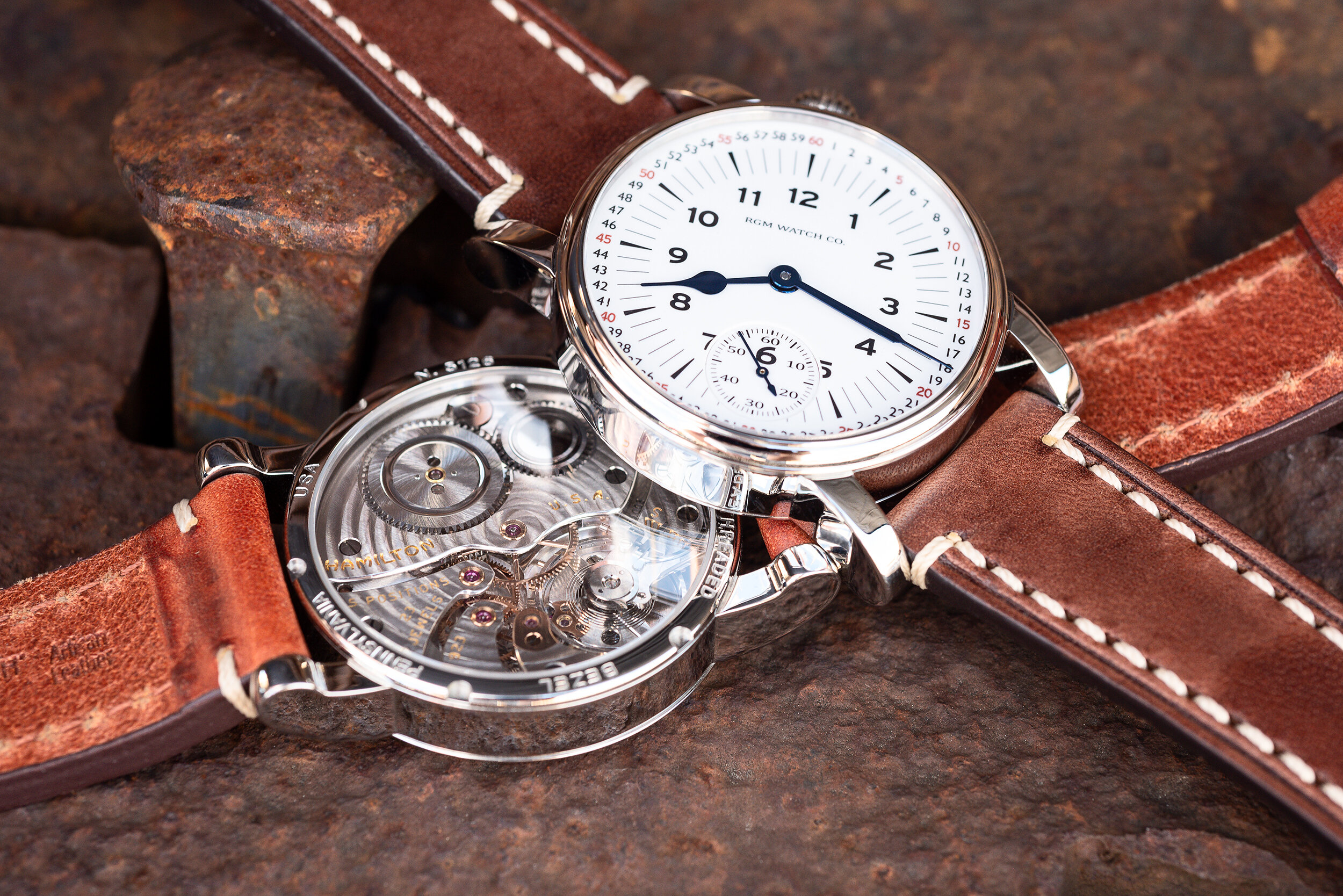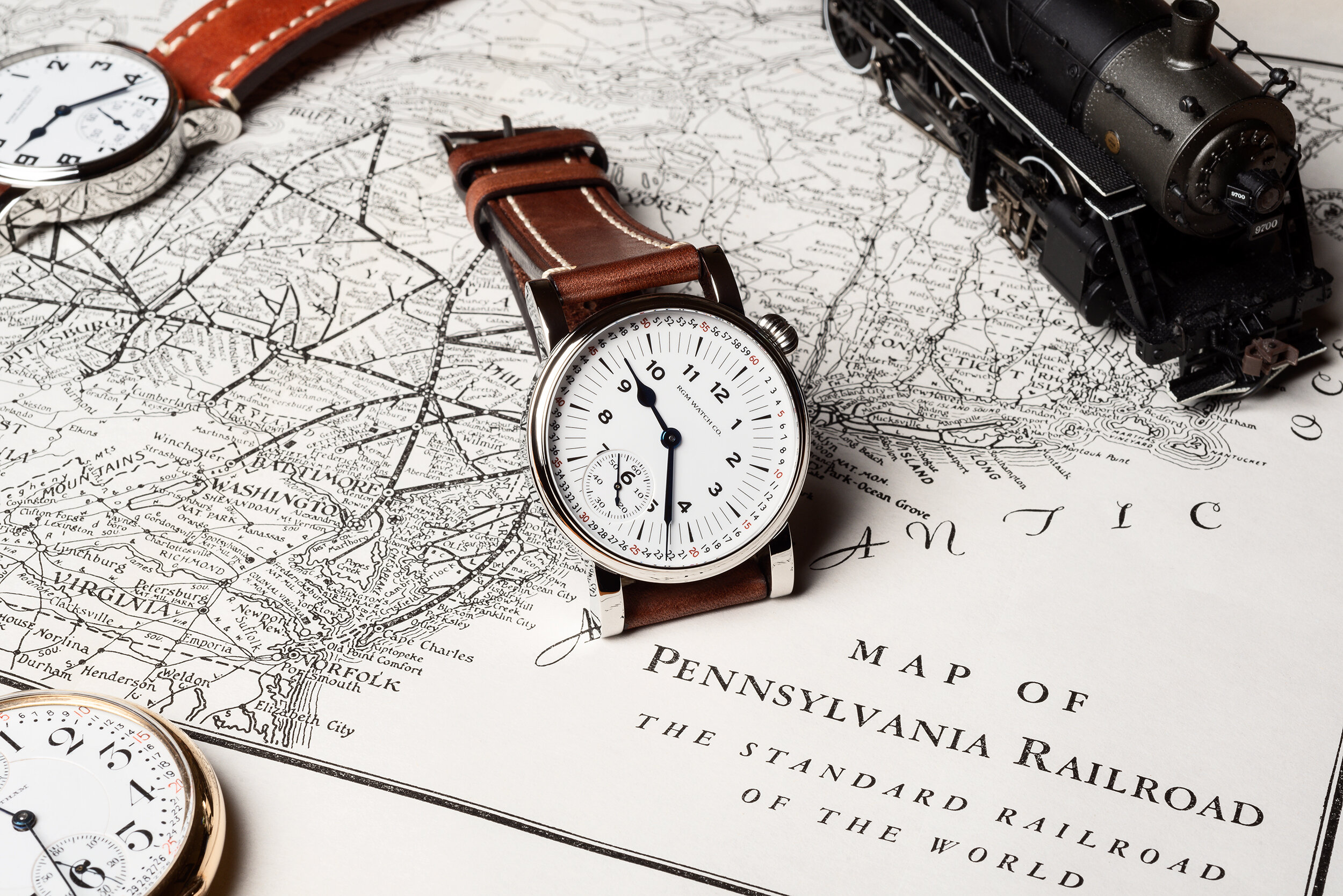Model 222-RR
Inspired by America's Great Railroad Watches from the Past
The Model 222-RR is a modern wristwatch with a vintage heart, featuring a Hamilton 10-sized pocket watch movement. RGM was the first to use these wonderful classic movements in a wristwatch. Our vintage Hamilton movements are rebuilt using parts that are in optimum condition, including a new mainspring made for this movement. We flat polish the steel parts by hand on a tin block to better-than-original condition. The entire process of careful reassembly to precise adjustment of the movement is managed by one watchmaker. The grade 921 movement has 21 jewels and was made in large quantities; the grade 923 has 23 jewels and is rare, with less than 4,000 movements manufactured.
The Grand Feu Real Enamel dial is modeled after American railroad watches from the past. The blued-steel hands remain true to the classic form, and the 1:30 crown position pays homage to early 20th-century timepieces. It’s also very natural to read the time when worn on the left wrist.
Why is the dial and crown offset? Click Here
Type 1 and Type II MONTGOMERY MARGINAL MINUTE STYLE DIALS
Henry S. Montgomery was the General Watch & Clock Inspector of the AT&SF Railroad from 1896 to 1923. Mr. Montgomery patented his first marginal minute safety dial design, Type I, around 1906, and the less common Type II dial variation was patented in 1920.
A Montgomery dial displays minutes 1-60 along the outer edge, with every fifth number in red. Some collectors say that a "true" Montgomery dial must have an hour number 6 visible inside the seconds register. Dials approved for use on the railroads needed to be functional and readable, even under adverse conditions. Most American watch companies used Montgomery dials on many of their railroad-grade watches.
BOX CAR STYLE DIAL
In 1925, Ball introduced a new official RR standard dial referred to as the Box Car dial. It displayed plain, sans-serif, heavy hour figures, making the dial extremely legible. Waltham, too, offered a similar Box Car dial, as did Elgin and Hamilton on some of their railroad models. Box Car style dials were in demand by railroad employees. They remain popular for their functionality and understated style.
Dial: Glass Enamel, Grand Feu (“Great Fire”)
Hands: Blued steel in the classic Railroad style
Movement Caliber: American Made Vintage Hamilton (921 or 923) - 10 Size - Manual wind, 21 or 23 jewels, 18,000 vph. Rhodium, Circular Damaskeening.
Functions: Hour / Minute / Second
Case: 316L Stainless Steel, 41.0 mm x 12.0 mm. Sapphire crystal front and back, 22mm lug width, and water-resistant to 5-ATM. Case length from lug end to lug end: 52mm.
Weight: 3.1 oz.
SCROLL DOWN TO SEE ALL 222-RR MODELS
$8950 with 921 movement
$9950 with 923 movement, when available.
Why is the crown at the 1:30 position?
During the Transitional Period from the early 1900s into the 1920s, some wristwatches appeared with the winding crown in this less common position on the wristwatch case. Some watch companies converted movements and dials that were originally designed for a pocket or pendant watch into a wristwatch by placing the crown position on the wristwatch case at what would normally be the 1:30 or 2:00 position.
Celebrating the unique look of those early wristwatches is the inspiration behind the RGM Model 222-RR. It also keeps the orientation of the sub-second in line with the 12 O’clock position, thus preserving the original design of the railroad-style dial. And it’s just fun!
We can also do a Lefty version with the crown at 10:30
Grand Feu (French for “Great Fire”) Enamel Dial
Creating an enamel watch dial is a high-risk art. Enameling is a technique in which colored powdered glass is applied to a metal plate. The surface is then heated to a temperature high enough to cause the powdered glass to melt and form a new surface. The Grand Feu technique ups the stakes. It involves meticulously coating a watch dial with successive layers of enamel. Once a layer is ready, the dial is heated at extremely high temperatures, ranging from 1472-1652°F (800-900°C). The repeated baking of each layer ensures a uniquely crisp aesthetic while permanently setting the enamel. Using high heat to create these beautiful dials also poses a risk. Each time it is re-fired, the danger of cracking, melting, or burning increases. The numerals and track are also baked into the surface. With great risk comes great reward: the appearance of a real glass enamel dial is unmistakable.


